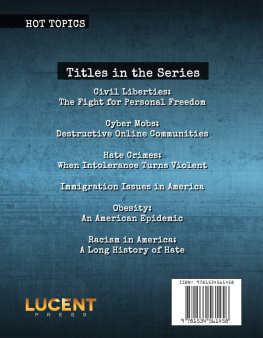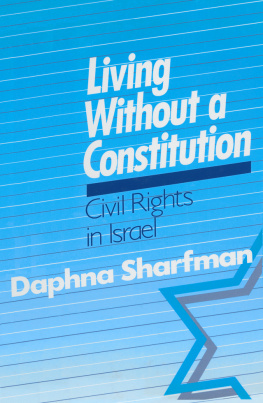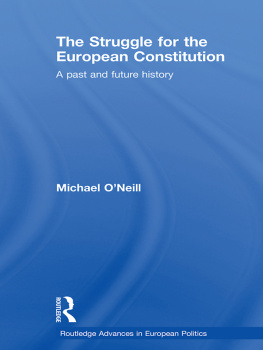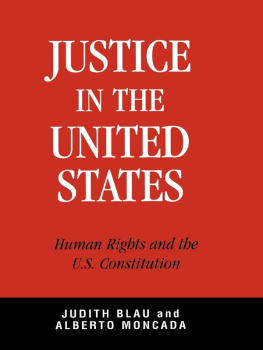Table of Contents
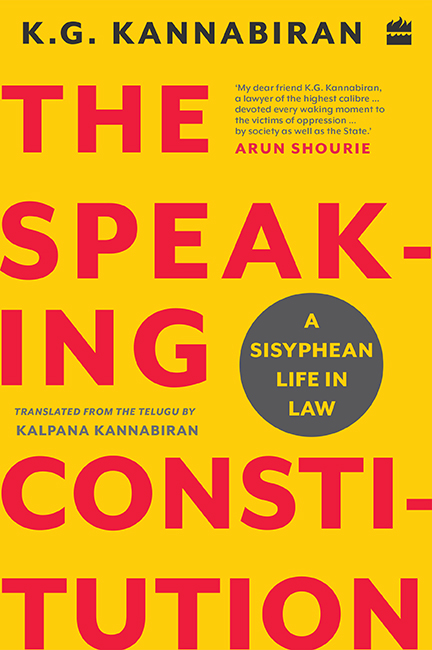

For
Vasanth Kannabiran
herstory history
Contents
T HE SPEAKING CONSTITUTION is based on K.G. Kannabirans 2009 memoir in the Telugu, titled 24 Gantalu: Atmakadhatmaka Samajika Chitram (24 Hours: A Personalized Social History). In working through the Telugu text, the English version presents several points of departure, and is an edited translation that includes detailed footnotes, references and case citations. With the exception of the section in Chapter 16, titled Reservations for Muslims, all other notes, references and citations have been introduced by the editor. Chapters have been reorganized thematically and chronologically, and some chapters merged. K.G. Kannabiran wrote in English, and spoke and read Telugu fluently. Where original English drafts of articles that were published in Telugu were available in his personal papers, these have been edited for this work; in a couple of chapters, versions published in English elsewhere have been adapted with the permission of the publishers. The Speaking Constitution also makes extensive use of K.G. Kannabirans personal archives, unpublished notes and court judgments.
W HEN EMERGENCY WAS declared in June 1975, I was five months short of my fourteenth birthday, with a mysterious new board examtougher than ever before, parents and students were warnedhovering menacingly overhead. Mine was the first batch of the ICSE (Indian Certificate of Secondary Education) in NovemberDecember 1975. In the fancy-dress event organized as part of the schools Teachers Day celebration in September that year, I wore a white cotton sari, powdered my cropped hair, put on a pair of borrowed spectacles and read out Indira Gandhis speech declaring Emergency. I have a vivid memory of myself reciting the opening lines of that speech: The President has proclaimed an emergency. This is nothing to panic about
I do not remember discussing what I would do at home. In fact, I dont recall any conversations except about how I would cross the hurdles of this monstrous examwith my teachers worried I would dent the 100 per cent pass figure that every school desperately wanted (like my parents, I was a mediocre student with no aspiration to excel in school). My mother vexed the teachers at the last parentteacher meeting with her nonchalant response that she was not really concerned with the school tally. She was caught in a cusp. My father, clearly, was busy keeping another tallyas is evident from his accounts in this bookof prisoners, of those detained in jails, in illegal detention facilities, and those being shot in encounters. In the midst of this, my sister Chitra, a year older, was tasked with chaperoning me and glowering at an ageing rogue tuition master with roving hands, who was entrusted by my somewhat desperate harum scarum mother to teach me math so that I could catch up with the syllabus less than a month before the exam.
On my fourteenth birthday that year, 1 December 1975, in the middle of my board exams, Bhoomaiah and Kishta Goud were hanged in Mushirabad jail in Hyderabad. My parents had both spent the previous night on the pavement outside the jail, and returned home that morning, after the execution, in deep mourning.
In 1977, Emergency was lifted and we had strangers trooping in and out of the house. The home was the world. Among the people who wandered in or came to stay were torture survivors, witnesses of encounters, and political prisoners who had been released. I have a vivid memory of E. Bhikshapathi, who stayed in our home in Domalguda. He was the key witness in the Giraipalli encounter and had come to testify before the Bhargava Commission. A painfully quiet and withdrawing presence, just a few years older than us, he had survived unimaginable torture and was released on the point of death by the police. The other four had been shot in his presence. I dont remember him saying a word during his stay although he lived in our home. The only person he responded to in monosyllables was my father.
My fathers office, always the front two rooms of our home till the very end, spilled into the house all the time. Everyone came in, everyone discussed everythingfrom encounters to tortures, to our personal choices and lives. Sometime around then, our paternal grandmother came to live with us. And I had made a habit of fencing off intrusions and inhabiting a secret life with Mills & Boon and (oftentimes imaginary) rendezvous with friends.
We were used to being asked if we were our mothers children, as she was the most popular English teacher in the largest womens college in the city, Reddy College, and it seemed like every second person we met (including our teachers) had been (or had someone in the immediate family who had been) Vasanth madams student. She was also the president of the largest college teachers union in the region: the Telangana Affiliated College Teachers Association (TACTA). Slowly, however, my fathers work, at first hazy, became more and more clear to usmy classmates parents whom I happened to meet seemed to know him or know of him, and we understood that the work he did was out of the ordinary. Several of the people spoken about in this bookpeople who were arrested or tortured, leaders of the Naxalite movement, activists in the civil liberties movement, politicians, lawyers, writers and poetswere people we knew and grew up meeting. Public meetings and demonstrationsnot partieswere our idea of social gatherings. When we did occasionally meet with families of my parents friends, it was families that either shared a sense of politics, or were their colleagueslawyers and Reddy College teachers. My mother ran a community kitchen, besides teaching full-time. There was always food on the table for everyone who came in, announced and unannounced. And we just absorbed everything around us, sometimes resisting people and intrusive talk, while making our individual choices.
Over a decade later, my father received a typed anonymous letterin early 1994from someone who claimed to be a policeman and an admirer saying that there was a plot by the police to murder him. The letter named the personnel plotting and those tasked with executing itin retaliation to the killing of two police officers in January and November 1993, allegedly by Naxalites. It added that that my fathers evening walks and self-driven Maruti van were being tracked by a jeep without a licence plate, and asked him to change his car and his walking routine. My mother asked him to go for his walks alone and not take my one-year-old daughter along, as was his habit. A day or two later, when he drove up to my apartment (which was at a T junction) to pick me up, I saw an un-numbered jeep stop at the crossroads and men get out, looking towards his car. They hadnt seen me walking out and he hadnt seen themI just went up to his side carrying my daughter, told him quietly, and blocked the window while chatting with him. The jeep circled the neighbourhood a couple of times and we stayed like that till they left.
On the night of 2 October 2003, I received a menacing phone call from an anonymous male caller speaking in Urdu who said that my daughters would be abducted on their way to school. This was a day after the Alipiri bomb blast that had targeted then chief minister N. Chandrababu Naidu. We issued a statement widely reported in the press, lodged a police complaint, and took the children off the school busresuming our normal routines after a short break. These were but two instances. We had by this time learnt to deal with difficult situations without allowing them to derail us.


